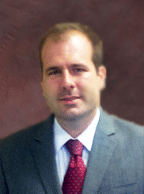Burns: AOE/COE and After-Hours Industrial Injuries
Tuesday, April 27, 2021 | 0
In today's COVID environment, many employers have provided a large degree of flexibility for their employees to work from home or, alternatively, return to the office on a part-time basis.

Michael P. Burns
Many businesses are now reopening, albeit slowly and cautiously, and employees are being given the choice whether to work from home or at their employer's facility. This is particularly true for white-collar jobs, such as clerical employees.
But what happens when an employee elects to come back to work on his or her own schedule? For example, when an employer allows employees to either work from home or at the office, this may create situations where employees are unexpectedly at the place of business at odd hours, including weekends and evenings.
There may be claims for injuries sustained at the place of business after employers have allowed their employees to work at the office on their own time schedule. This will undoubtedly create concerns for employers when injuries occur during odd hours.
A 2014 Workers' Compensation Appeals Board panel decision provides a good primer for these situations. In the case of Campos v. University of Southern California (2014), the applicant was employed as a custodian. She began her shift at 8 a.m., and it ended at 4:30 in the afternoon. She went home at the usual time, only to return to the workplace later that night at around 9 p.m. to retrieve her husband's keys that she had left in a jacket pocket.
To get into the workplace, she used an employer-provided card that granted her access to the building outside of her regular shift. The employer had issued the card because she was sometimes called to work during emergencies.
While she had not been called to work that evening, applicant entered the maintenance room to retrieve the keys and was assaulted by a co-worker. She filed an application alleging injury on an industrial basis. The case went to trial and the judge found that applicant did not sustain injury AOE/COE.
The WCAB affirmed, noting that for an injury to occur in the “course of employment,” the employee must be engaged in the work he or she has been hired to perform and it must occur within the “period of his employment.” The course of employment is limited by time as well as by space, and employment includes not only the doing of the work but a reasonable margin of time and space necessary to be used in passing to and from the place where the work is to be done.
The WCAB held that “injuries taking place when a worker has re-entered the job site for a personal motive, after his or her workday has ended, have been held to be outside the course of employment.”
Applicant’s motives for returning to the job site were purely personal in that she wanted to recover her husband's keys. The WCAB also held that applicant's “on-call” status did not, in and of itself, place her in the course of employment.
When evaluating claims from applicants who are alleging injury on their employer's work site during non-work hours, careful attention should be paid to the employer’s instructions concerning returning to work. For example, if employees are prohibited from entering the facility after a certain time in the evening, this may be a valid basis for denying the claim.
In today's environment, many employers are allowing great flexibility to employees to return to the office whenever they feel comfortable. The first point of contact in evaluating these types of claims is the employer's human resources department. Careful attention should also be paid to the employer's handbook and policies. The employee’s supervisor should also be contacted, as the applicant may allege there was some expectation or understanding that the office could be used during non-work hours, such as in the evening or on the weekend.
An applicant who is injured at the employer’s facility during non-work hours will likely allege that he was at the facility to work. However, careful investigation can reveal that there may be nonindustrial motivations for returning to the office.
An employee who elects to return to the office in the evenings or during the weekends due to a fear of COVID-19 may be able to present a successful claim if there is express or implicit permission from the employer to work at the office at his own convenience.
Before the pandemic began, these types of cases were not frequently seen, but restrictions imposed on employers for reopening their businesses, and safety protocol at offices, may result in situations where employees feel free to work at the office at their own convenience and on their own schedule. The place of business in the post-COVID world is certainly not the same as before, and the WCAB will certainly be addressing these issues in the future.
Michael P. Burns is a partner at Bradford & Barthel’s San Jose location. This entry from Bradford & Barthel's blog appears with permission.



Comments